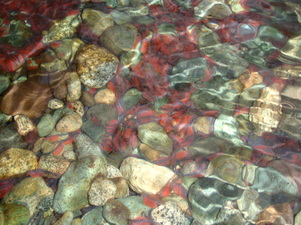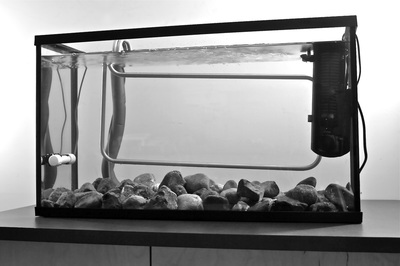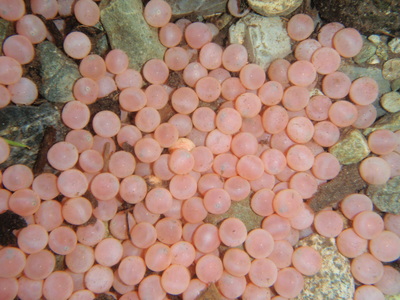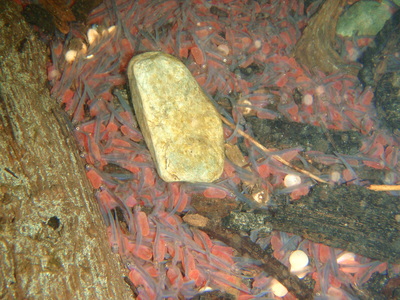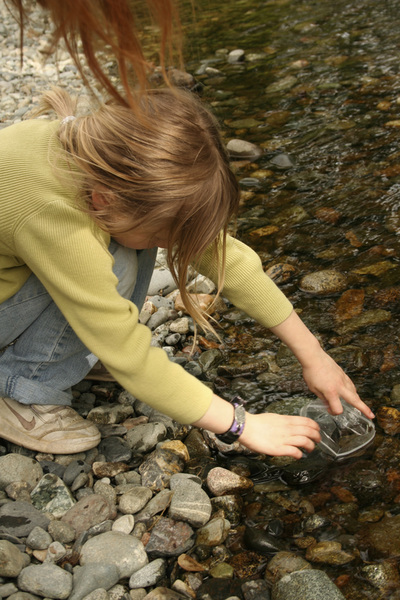experiences that, combined with classroom and field studies, serve to develop and maintain a strong environmental ethic. Local funding partners for “Stream to Sea” include volunteer strategic enhancement facilities, public school districts, the Watership Foundation, and the Pacific Salmon Foundation. Of these, the Goldstream Volunteer Salmonid Enhancement Association (GVSEA) is the most significant contributor, largely due to its commitment to the Classroom Incubation Program. Classroom Incubation Program – 120 Liters of a Local Stream Each year, coastal communities witness the return of spawning salmon to local rivers and streams. Before they die, the spawners deposit and fertilize their eggs, then cover them with a protective layer of stream gravel. The development of a new generation, from egg to adult, is more of a mystery than the spawning stage, mostly because the process is hidden beneath the gravel and in the deeper, darker pools of the native stream. The Classroom Incubation Program provides a portal to this early stage of salmonid life. Using a 120 liter aquarium cooled to local stream temperatures, students can incubate up to 200 salmonids in their own classroom or library. A program coordinator brings eyed eggs to the school in January. Students witness the hatching process and begin feeding them once they emerge out of the gravel. Until they are released as fed fry to a local stream in late April or May, students observe and record development and maintain a healthy habitat for their charges. This includes daily monitoring of water temperature and quality.
During the 2015/16 school year, DFO supported classroom incubation projects in 105 classrooms in the Capital Regional District, including the Southern Gulf Islands. The Howard English Hatchery provided eyed eggs for 98 of these projects – a total of 19,600 eggs. GVSEA volunteers also conduct school tours in the fall when they are collecting broodstock, and annually raise funds for participating schools to purchase classroom incubation equipment. For more information on programs or inservice opportunities, please contact Don Lowen, DFO Education Coordinator, at 250-213-8582, or [email protected]. Blog Article By: Don Lowen Photography By: Shawn Kerr (Community Advisor, Fisheries and Oceans Canada) & Don Lowen
1 Comment
|
|
|
© 2024 GVSEA
|

